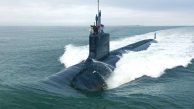
Taiwan and China Summery
eWise Blog
Despite China’s rapid military advancements, a large-scale military operation against Taiwan in 2025 remains unlikely. Several factors, including concerns over military command quality, economic challenges, social stability, and uncertainty surrounding U.S. policy, will likely prevent such a manoeuvre. However, China is expected to continue increasing pressure on Taiwan throughout the year.
The United States has identified a potential Chinese military move against Taiwan as a primary strategic concern. Military improvements in China should not be underestimated, as the country has made significant strides in artificial intelligence and overall military capability. By the end of 2025, China’s navy is projected to have 395 ships, including three operational aircraft carriers. It is also enhancing its amphibious capabilities with advanced assault ships capable of deploying troops, armoured vehicles, drones, and helicopters. Reports indicate China is constructing specialised barges to support potential amphibious landings.
China now possesses the largest aviation force in the region, with modern fighter jets and stealth aircraft that extend its operational range. Additionally, its nuclear weapons stockpile is expanding, and it now leads in hypersonic missile technology. The army has increased troop presence along the Taiwan Strait, enhancing its mobility, firepower, and rapid-strike capabilities.
Throughout 2024, China engaged in military exercises simulating Taiwan invasion and blockade scenarios. Following the inauguration of Taiwan’s new president, large-scale drills were launched, demonstrating China’s ability to encircle the island quickly. Subsequent exercises further showcased its capacity to enforce a blockade or quarantine. In December, a massive military display highlighted China’s defensive readiness against foreign intervention in the region.
Despite these advancements, significant obstacles remain. A key challenge is China’s lack of combat experience. While military drills improve preparedness, they cannot fully replicate the complexities of large-scale warfare, particularly urban combat and extended logistical operations required for a Taiwan invasion. Concerns persist regarding the capabilities of China’s officer corps, particularly in decision-making and adaptability. Corruption also continues to be a serious issue, with recent scandals resulting in high-profile dismissals within the military hierarchy.
Domestic factors further complicate military considerations. China faces demographic challenges, including an aging population and declining birth rates. Social unrest has been exacerbated by rising violence and a series of mass attacks. The economy is also struggling due to mounting local government debt, declining investor confidence, and real estate sector instability. Although China’s trade surplus has grown, Beijing remains cautious about potential economic conflicts with the United States and is actively working to strengthen ties with other global partners.
While China’s leadership likely has growing confidence in its military capabilities, the decision to use force against Taiwan has not been made. The 2027 timeline appears to be a target for military modernisation rather than a definitive invasion date. Economic and social stability concerns remain priorities for Beijing, and the response of the U.S. administration will play a crucial role in shaping China’s actions. Given these factors, while military exercises and coercion tactics against Taiwan will continue in 2025, the likelihood of a large-scale military operation remains low.



